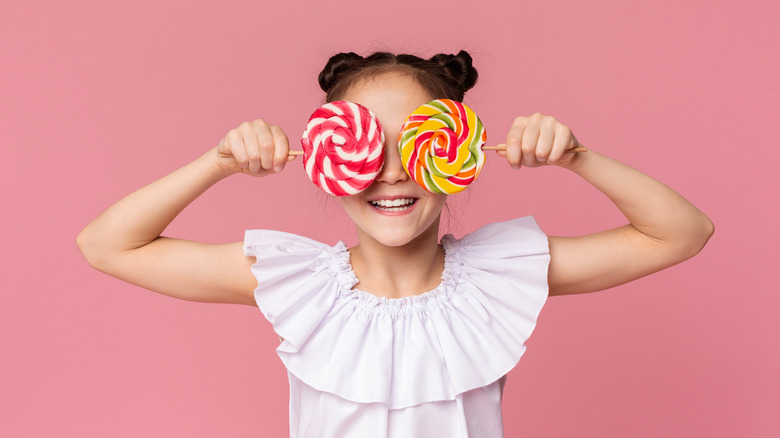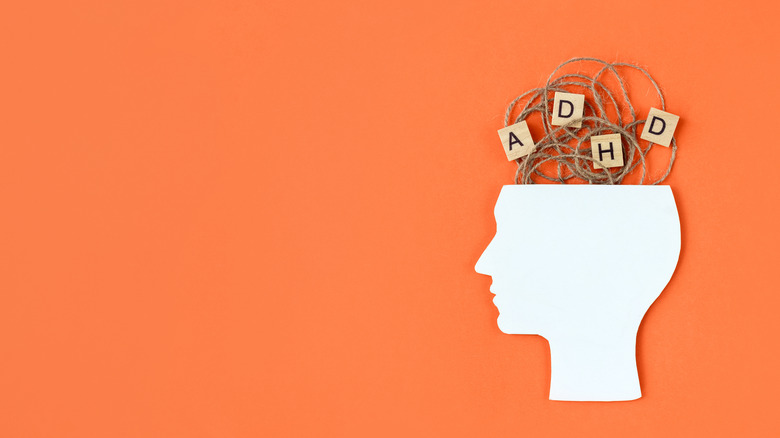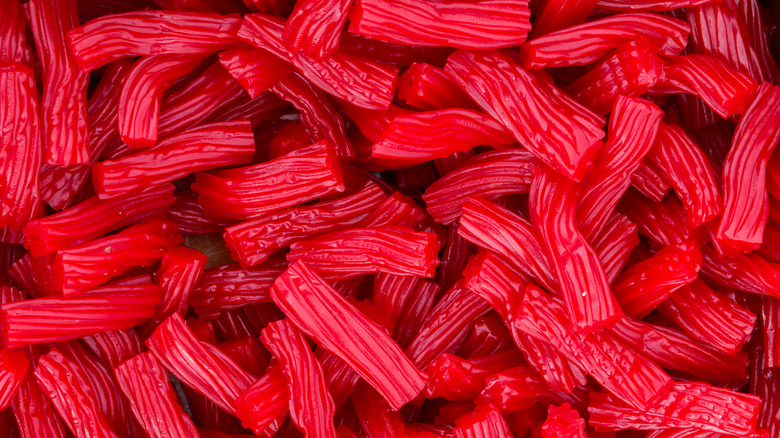What Is Red Dye 40 And What Kinds Of Candy Is It In?
Red or blue? It's a question of the ages. Are we talking about the choice between living in the ignorance of illusion versus accepting the, oftentimes, agonizing truths of human existence? Or are we talking cherry versus blue raspberry? Either way, your decision could come with some pretty dire consequences.
If you're wondering how your slushie preference could have any impact on your life, you need look no further than the ingredients list. Red slushies, much like countless other processed foods, medications, and cosmetics, are chock full of red dye 40. Of the nine artificial food coloring agents approved by the U.S. Food and Drug Administration, it's the most common one to be used in grocery products (per GoodRx Health).
Despite their FDA approval, artificial food coloring has a pretty dodgy conception story. They're derived from the fossil fuel petroleum. You know — the same stuff gasoline is made of. But don't worry! All traces of petroleum are said to be removed before it gets added to your food. Regardless of their general safeness, concerns about whether artificial food colorings — particularly red dye 40 — can have negative health implications have been prevalent among health experts.
How red dye 40 can affect your health
A study published in 2013 in the International Journal of Occupational and Environmental Health discovered that red dye 40 was contaminated with benzidine, a carcinogenic compound that contributes to the occurrence of bladder cancer. And while this should certainly raise some dyed-red flags, most researchers are more concerned with how red dye 40 plays into the incidence of hyperactivity in children.
Research regarding red dye 40's influence on children's behavior has come with some mixed results. The FDA's Food Advisory Committee asserted in 2011 that no causal link existed between the consumption of red dye 40 and behavioral effects in children, but they deemed more research on the subject a necessity. A meta-analysis published in 2012 in the Journal of the American Academy of Child and Adolescent Psychiatry found that 8% of children with ADHD may be experiencing such symptoms because of color additives and a study published in the March 2013 issue of the American Journal of Psychology determined that the exclusion of artificial food colorings improved ADHD symptoms in participants. Most recently, an assessment released in 2021 by the California Environmental Protection Agency reported that some children may have a food sensitivity to red dye 40 — making them more susceptible to these behavior changes.
Aside from hyperactivity, the Cleveland Clinic notes that red dye 40 may also give way to some other unsavory side effects including depression and irritability, hives, asthma, sneezing, skin irritation, and migraines.
Candies containing red dye 40
Red dye 40 can be found in everything from cereals and baked goods to juices and soda, but nowhere is it more prevalent than in the candy aisle (per GoodRx Health). If you're on a mission to avoid red dye 40, there are a slew of candies you should permanently cross off your shopping list.
While avoiding any red candies or those that claim to be "fruit" flavored is a safe bet, red dye 40 is also commonly found in golden or brown-colored candies (per Red40.com). With that in mind, we can assume that most cinnamon, coffee, and chocolate-flavored candies also contain the food coloring.
Red dye 40 can be found in many hard and gummy candies such as Skittles, M&Ms, Starburst, Jolly Ranchers, and Twizzlers, as well as Lifesavers and Hot Tamales. Dum Dum Pops, Tootsie Roll Pops, and Smarties are also rife with the controversial red dye.
Brach's — famous for their seemingly unending list of sweet treats — uses it to color a great number of their hard and gummy candies, as well as their fruit snacks. Everything from Bob the Builder Fruit Snacks to Hi-C Fruit Snacks is chock full of red dye 40.
Even our breath fresheners aren't safe! Different flavors of popular breath mints like Altoids and Certs, as well as chewing gums such as Bubblicious, Bubbaloo, Chiclets, Trident, Trident for Kids, and Dentyne Breath Freshening Gum share in having red dye 40 featured on their ingredient lists.


